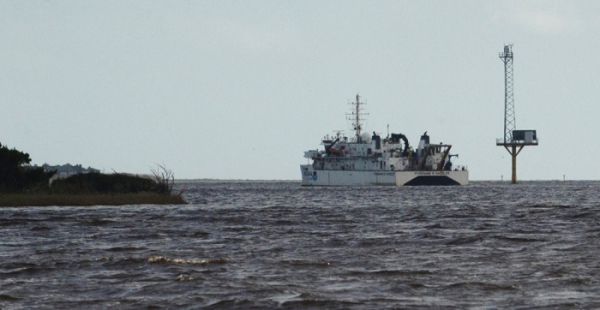While conducting hydrographic surveys at the request of the U.S. Coast Guard following Hurricane Florence, NOAA’s Office of Coast Survey navigation response teams (NRT) identified hazardous obstructions in the Cape Fear River channel. Since these dangers to navigation will remain in place while the port reopens, NOAA updated its charts with the new hazards and distributed them to the port, Coast Guard, and key stakeholders. The time from the survey to the publication of the chart was less than 24 hours, an unprecedented accomplishment for Coast Survey.
“NOAA has streamlined all phases of our ping-to-chart process over the past 10 years,” remarked Rear Admiral Shepard Smith, the director of NOAA’s Office of Coast Survey, “this milestone results from dozens of technology, workflow, and distribution changes that have dramatically improved the level of service to the American public. We would not even have imagined doing this in the paper chart era. The most significant improvements have come in sonar integration, 3D GPS surveying, gridded bathymetry workflows, database-driven GIS-based cartography, and free internet chart distribution.”
As Hurricane Florence made landfall as a Category 1 storm on September 14 near Wrightsville Beach on the North Carolina coast, Coast Survey’s navigation managers and response teams were positioned and standing by, ready to conduct hydrographic surveys in the affected ports and waterways. As the storm passed through, requests from the Coast Guard and U.S. Army Corps of Engineers for survey assistance were received.
Lt. Cmdr. Ryan Wartick, NOAA’s mid-Atlantic navigation manager, was embedded with the Coast Guard incident command post and Maritime Transportation System Recovery Unit team at Seymour Johnson U.S. Air Force Base in Goldsboro, North Carolina. With local Army Corps personnel affected by the hurricane, the team relied heavily on NOAA field units and their surveys to assist in the decision to reopen the ports of Morehead City and Wilmington.
Continue reading at NOAA.
Image via NOAA.


